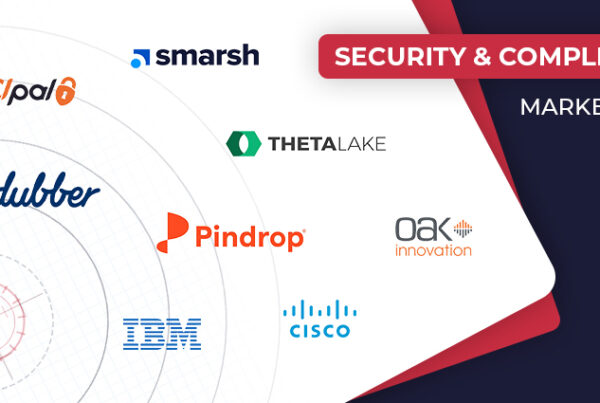
Whatever plans, strategies, and goals companies around the world had in place entering 2020 were made moot and thrown out the window only a few months into the year when the COVID-19 pandemic wrapped its fingers around the world and started to squeeze. Lockdown orders and social distancing guidelines put into place to slow the spread of the deadly novel coronavirus forced companies to temporarily close their offices and send employees to work from home.
Seemingly overnight, much of the workforce became remote, setting in motion moves companies made to address their newly decentralized business models. The migration of enterprises and SMBs to the cloud – which already had been underway for several years – suddenly accelerated as organizations turned to cloud services to support their work-from-home (WFH) employees. Enterprise spending on cloud infrastructure services jumped 28% year-over-year in the third quarter, reaching $65 billion, according to Synergy Research Group.
The drive for cloud services also was seen in the skyrocketing demand for cloud collaboration tools, with Zoom, Microsoft Teams, Cisco Webex, and other vendors seeing triple-digit growth quarter after quarter.
In the third quarter alone, Zoom saw revenue grow year-over-year by 367%. Other vendors saw similar growth. Gartner this month noted that revenue in the global unified communications and collaboration space jumped nearly 27% in Q3, to $12.2 billion, while the segment that includes videoconferencing software and cloud services grew nearly 47% to almost $5.8 billion.
This new business model also has forced companies to reset priorities. Business continuity and disaster recovery became a key focus for IT departments and touched on everything from cybersecurity to connectivity to management.
Enterprises adapted, but the business universe won’t snap back to what it was pre-pandemic. Many of the changes are permanent as organizations turn the page to 2021. So, what technologies and trends can they expect to see in the coming year? Here are some to look out for:
>Hybrid workplaces are here to stay. A Gartner survey of HR professionals this month found that 90% of respondents expect to allow employees to work remotely at least part of the time after COVID-19 vaccines are widely distributed. Given that, organizations will have to make permanent much of what they’ve put in place – and then add to it. Spiceworks Ziff Davis found that support for a remote workforce is a key driver of IT budget increases for 2021. That could mean:
· Wider adoption of virtual desktop infrastructure. VDI gives an agile workforce a way to access corporate networks and data while enabling companies to more easily manage and secure their environments. A Spiceworks Ziff Davis survey found that 26% of respondents said they’ll increase VDI deployments due to the pandemic.
· More features added to existing collaboration apps – think shoulder tap buttons or quick-call functions – to improve the remote meeting experience, said Richard Roberts, vice president of U.K., Ireland, and Northern Europe at Mitel.
· Combining videoconferencing with emerging technologies like augmented reality (AR) to make the experience even more immersive, Roberts said.
· More adoption of cloud-based unified communications solutions.
· Offices that look different, with more collaboration hubs for employees to meet and mix.
>A widely distributed workforce and greater reliance on cloud services will expand the attack surface for bad actors. Applications and data are accessed and stored in the data center and cloud, and at the edge, and you can’t put a firewall around all that. Security, therefore, will continue to be a top concern.
· Zero-trust models more widely adopted by businesses. That’s according to Axonius, a provider of asset management software. Such models require that all users be authenticated and validated and include such tools as multi-factor authentication, identity and access management (IAM), and advanced endpoint security.
· New encryption methods making their presence known. An example is fully homomorphic encryption (FHE), which enables data to be processed and analyzed when encrypted. In a world where data is stored in different places and is moving between them, being able to work on data without exposing it to cybercriminals or third parties will be important. IBM this month introduced an FHE service on IBM Cloud.
· NIST or CIS security framework adoption. Companies should consider taking on these frameworks to help reduce security risks, according to cloud hosting company iland.
· Rising popularity of managed security services. The increasing number and complexity of cyberthreats, combined with a shortage of skilled professionals, has enterprises and SMBs turning more to managed security services, a space that MarketsandMarkets says will grow from $31.6 billion this year to $46.6 billion in 2025.
>Automation will grow in importance in 2021. With more people doing their shopping online or calling in orders and picking them up curbside, automating as much of the process as possible will enhance the customer experience.
· Rise of hyper-automation, according to Eric Musser, general manager of intelligent automation at Pegasystems. There’s been a lot of innovation in recent years behind artificial intelligence (AI), machine learning, robotic process automation (RPA), low code, and other advanced automation technologies. These will start to coalesce, working together seamlessly to bring intelligent automation to enterprises.
Musser said that 50% of C-level executives believe hyper-automation will impact their business’ customer service operations in the next five years – up from 37% today – while they also see it influencing other areas, including workflow and case management processes (a 29% increase over five years), supply and distribution chains (38%), and risk management (22%).
>Marketplaces will become more important for the channel, according to Bill Lapcevic, vice president of business development at identity management company Auth0. Organizations want to control their purchasing decisions and will look to marketplaces – particularly large cloud marketplaces – to help them build extensible solutions to cover a wide range of needs. These marketplaces will become a larger fulfillment vehicle for channel transactions.
>M&A activity will climb. HoJin Kim, vice president of worldwide and North American channel sales at network security vendor SonicWall, said channel players will have to reinvent themselves to adapt to pandemic-caused business changes – in particular, the digital workforce. That will lead to a rise in acquisitions in the channel, with partners acquiring smaller channel companies with specific expertise around verticals or new service revenue streams, and larger, regional partners acquiring local companies to increase their geographic footprint or acquire more technical expertise.
Given all these trends and an extremely dynamic technology landscape, channel partners will have to stay on top of trends, be willing to evolve, and continually educate themselves to meet clients’ changing needs and succeed in 2021.
This article first appeared on Channelnomics on December 23rd 2020.
Access the original article here!











